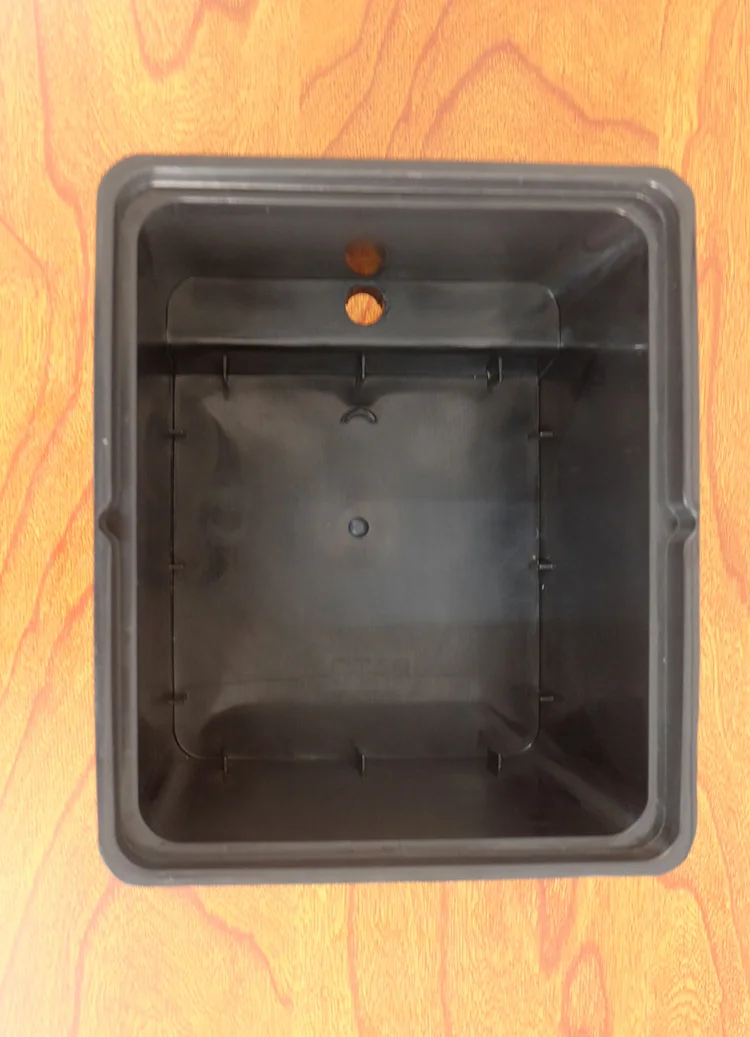
Use primer and PVC cement to attach the PVC endcap and elbow, make sure that the elbow is facing downward while the holes in the PVC are facing upward.By using a drill and a 1-inch hole saw, drill out holes on the marks. Put the Dutch buckets on the table and decide on spacing mark the placement of the drains for each bucket on the drain line.Cut PVC down to 8 feet or length of the table, leaving room on the end for the end cap and elbow.
#Bato buckets for sale how to
For growers who wish to build a larger multiple-line system, we recommend going through the Dutch buckets course first to familiarize you with the technique.īuild a hydroponic Dutch bucket system How to Build Dutch Bucket Hydroponic System. The number of buckets – To build a larger one-line system, growers can use a larger reservoir and pump, longer irrigation and drain lines, and simply set up the system the same way as the system below. And each part of the system has variations to suit grower needs. Drippers control the flow to each bucket, and the solution runs through the media and drains out of the bucket. A reservoir pump runs particularly formulated nutrient solution through a straight line over the buckets. The design of Dutch buckets systems is simple, with multiple variations on irrigation and equipment. Mistakes to avoid while growing plants in a Dutch bucket systemĭifferent variations on Dutch bucket hydroponics design.Growing media for Dutch bucket hydroponic system.Optimal pH for Dutch bucket hydroponic system.In this article we also cover the following topics Building a Dutch bucket system is simple, inexpensive, and easy to operate at any scale. Dutch buckets are an easy, approachable way to begin hydroponic (or aquaponic farming (although aquaponic Bato systems are more difficult). It can be used as a Hydroponic system and works great for aquaponics as well even though it is harder to set up.ĭutch buckets offer the greatest versatility in growing different plants due to its customizable features and flexibility in arrangement and can be used for both hydroponics and aquaponics. The Dutch Bucket is, by all means, an effective yet easy to set-up for any indoor hydroponic and outdoor hydroponic growers. It differs in the way it looks, but still, operates on the same principle and the nutrient is forced onto the bucket (that replaces the tray) then automatically drains back to the reservoir at regular intervals. This is a variation of the Ebb and flow (or Flood and Drain) method. A step by step guide to Dutch bucket hydroponics They can be used with a large variety of different growing mediums, whether filling the whole bucket with hydroton clay pebbles or using lids with 4 inches net pots. They are affordable, versatile, and reusable and are easily connected together making a Dutch Bucket system endlessly expandable. Dutch buckets are one of the popular ways to grow big plants using hydroponics. Introduction: Hello gardeners today we are back with a very good information of Dutch Bucket Hydroponics. Common mistakes to avoid for growing plants in a Dutch bucket hydroponics.Different plants for Dutch bucket hydroponics.Growing media for Dutch bucket hydroponics system.Different ways to run the drainage system in the hydroponic system.Working of Dutch bucket hydroponics system.Different variations on Dutch bucket hydroponics design.A step by step guide to Dutch bucket hydroponics.Siphon pipe also prevents over accumulation of nutrient solution. This feature prevents growing medium from drying out and causing water stress between irrigation cycles. Siphon Elbows regulate safety reservoir of nutrient solution at bottom of bucket to 2.5cm deep.Designed to be fed by drip emitters and plumbed to drain using a common 1.5" PVC pipe.Simply connect your buckets and siphon elbows (included) to standard 1-1/2 inch (3.8cm) drain pipe, returning your water back to reservoir to be recirculated through the drip system again and again.


You can use just about any type of growing media, including Expanded Clay Pebbles, Perlite, and Coco Peat. 10L Dutch Bato Bucket Drip Irrigation systems offer endless expansion possibilities. They are a re-circulating, drip irrigation type system and are suitable for larger, long-term crops such as vine tomatoes, peppers (capsicum), cucumbers, roses and other flowers.


 0 kommentar(er)
0 kommentar(er)
